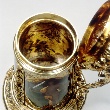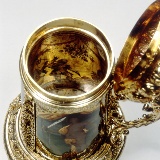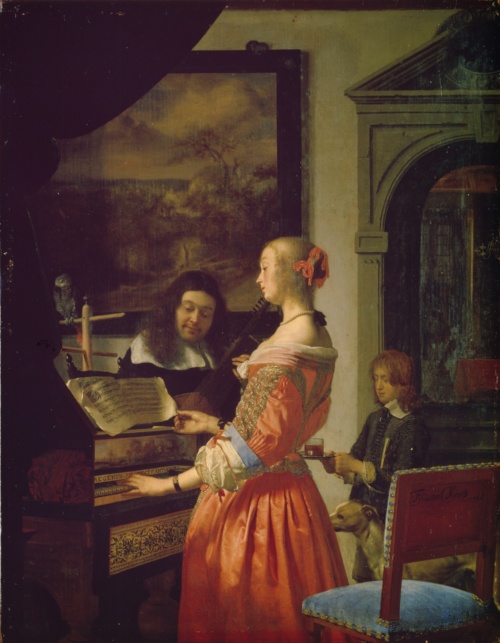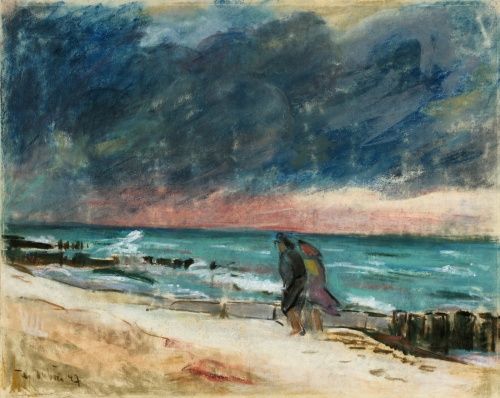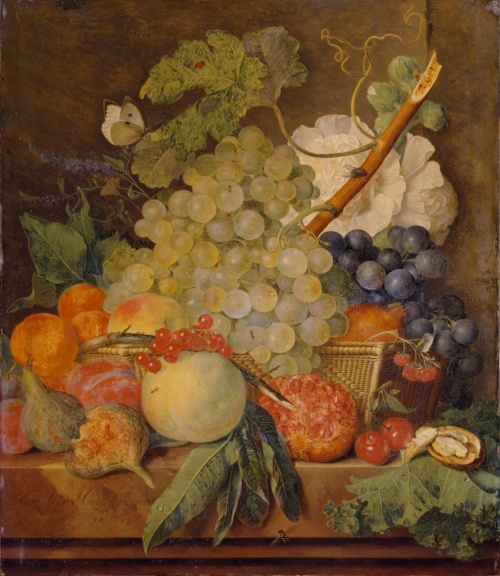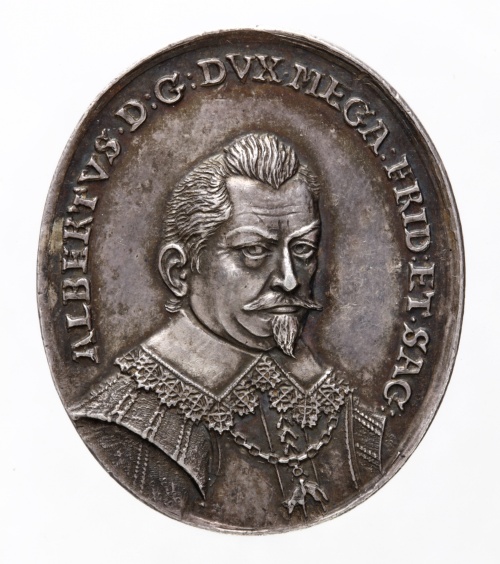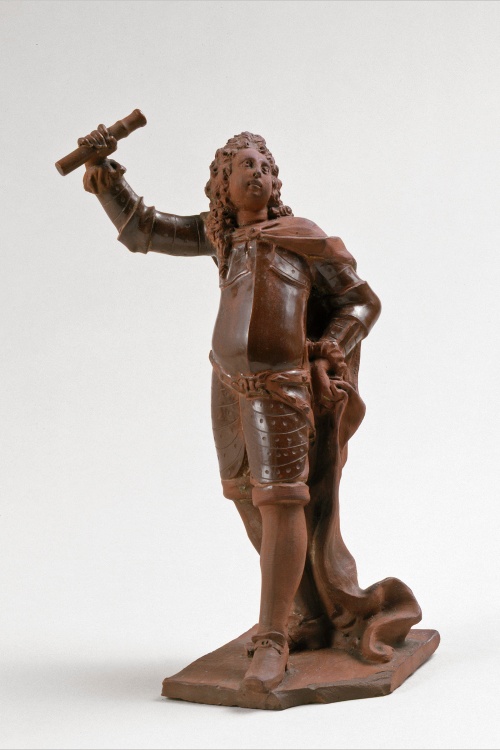Tankard with depictions of heroic female figures from the Old Testament

Tankard with depictions of heroic female figures from the Old Testament
Tankard with depictions of heroic female figures from the Old Testament
- Nuremberg
- around 1610
- setting: Christoph Jamnitzer (around 1559-1637), Nuremberg
- reverse glass painting: Hans Jakob Sprüngli (1563-1618), Zurich
- height 34.5 cm
- Nuremberg
- around 1610
- setting: Christoph Jamnitzer (around 1559-1637), Nuremberg
- reverse glass painting: Hans Jakob Sprüngli (1563-1618), Zurich
- height 34.5 cm
The splendid tankard was owned by the Mecklenburg dukes for many centuries: it was recorded for the first time in an inventory from 1617 shortly after its creation. Two outstanding artists, the Nuremberg goldsmith, Christoph Jamnitzer, and the Zurich glass and reverse glass painter, Jakob Sprüngli, worked together to create the exquisite object as one of only four surviving tankards around the world. Sprüngli’s brilliant reverse glass painting depicts Judith, the murderess of Abimelech and Jael, on the outside and a cavalcade with food, a drum and a wine cask on the inside. Jamnitzer contrasts these with an equally rich graphical setting of gilded silver.
The tankard was made using the complicated double wall technique, whereby the two glass cylinders are exactly placed within one another. The painted layers lie protected in the gap as, in contrast with glass painting, the embellishments with the transparent image carriers are on the back with reverse glass painting. “Cold painting” is mainly done using oil paints without baking the colours. The difficulty with the reverse glass technique lies in the “reverse” manner of painting from the foreground to the background. Sprüngli also deployed an artistic finesse, the so-called deceptive reverse glass painting, whereby he painted figures on parchment and then stuck it onto the glass. His enamelling technique, the reverse painting of etched gold leaf with transparent colourful varnishes, increased the brilliant effect.
Text: KA. M.

